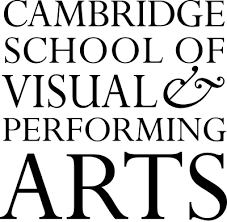Course Content
EXPERIMENTAL STUDIES
This all encompassing subject ensures you have a solid understanding of drawing-based theory including mark making, colour theory and perspective theory that takes into account how work is produced. Over the year you will cover off the following areas:
- Elements of composition, tone, colour, texture, form and structure
- Observational analysis
- Visual interpretation
- Improvisation techniques
- Rendering the abstract
- Experimental drawing
CRITICAL AND CONTEXTUAL STUDIES
Critical and Contextual Studies is a course designed to develop you as a student. The course provides an introduction to significant movements and ideas in Art and Design History to allow students to deepen their knowledge, visual literacy, and personal understanding of key concepts essential for working in the creative industries. Weekly assignments and individual presentation tasks are used to help develop writing, research, and speaking skills that build confidence and prepare students for university interviews. The course encourages students to reflect on their own work, to consider the context in which they are working and the type of practitioner they want to be.
ENGLISH TRAINING
Through a variety of teaching styles, we focus on four key skills you need to pass your IELTS exam; listening, reading, writing and spoken English. This subject is linked with your Contextual Studies lectures so you are better equipped with vocabulary to explain your workings and promote your final pieces.
FASHION DESIGN
This course is to help you create a Fashion Designer’s Portfolio through a rigorous thought process : from Content and Research, then onto Analysis and Exploration through 2-dimensional and 3-dimensional Design Methodologies, and finally, the execution of a fashion product with presentation.
The Pattern Cutting and Garment Construction workshops are part of the curriculum to support the Design Realisation stage of the projects. Students are taught some very useful basic skills such as basic block making and prototype production. The key is to generate creative ideas not only from visual, 2-dimensional design processes (drawings), but also from the architectural view point through limitless garment construction methods through studying the human form.
Students are encouraged to challenge and question the purpose and idea of Fashion in the Times we live in. Not only they are encouraged to create beautiful, exciting fashion ideas, but also to help drive our Industry into the next era and beyond. Passion and Curiosity in Learning is what we are looking for.
Example skills learned | for a Research Fashion Project, Fashion Design Methodologies, Basic Pattern Cutting & Sewing skills, Production (3-D Development), Contextual Studies, Presentation Skills, Fashion Portfolio Skills suitable for Higher Education Application.
Preparation for | Fashion Design for Menswear and/or Womenswear, Pattern Cutting, Product Design and Development for the Fashion Industry, Fashion Styling, Fashion Atelier & Tailoring etc.
FASHION COMMUNICATION
This combines all of the creative elements of the fashion industry without creating garments; it's the styling, image creation and creative communication. You are not only exposed to graphic design components of fashion, such as the design of a fashion brand identity or fashion magazine page layout, but also the content creation using a variety of creative hands on and digital processes. A passion for the industry and an eye for creativity are must-haves if you are to excel in the world of fashion communication.
Example skills learned | Fashion Styling, Fashion Content Creation, Contemporary Fashion Image making, Portfolio Development and Experimental Techniques suitable for Higher Education Application.
Preparation for | Fashion Styling and Production, Creative Direction for Fashion, Fashion Styling, Fashion Communication, Fashion Promotion, Fashion Branding, Fashion Photography, PR and Communication and Visual Merchandising for Fashion.








